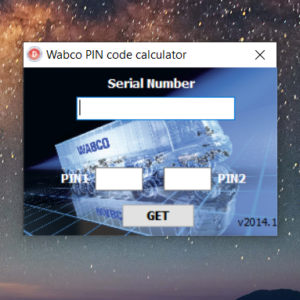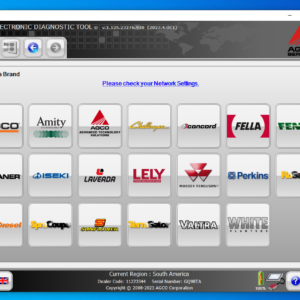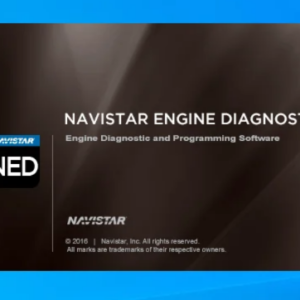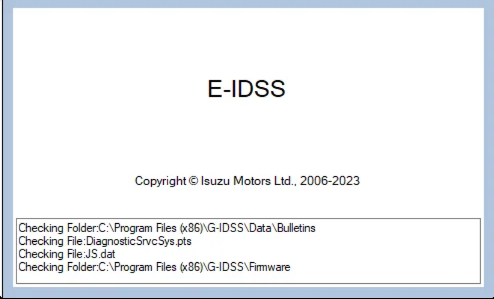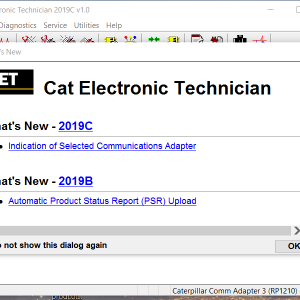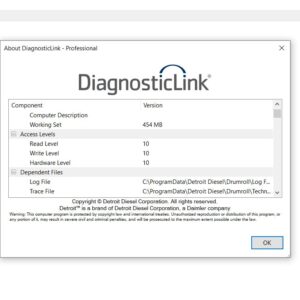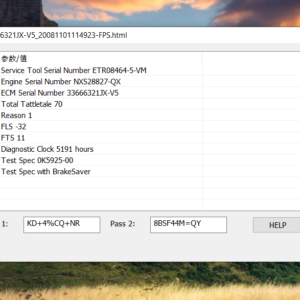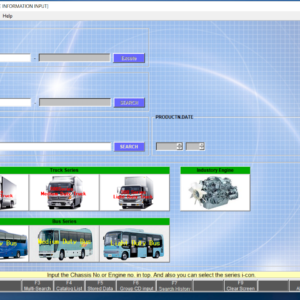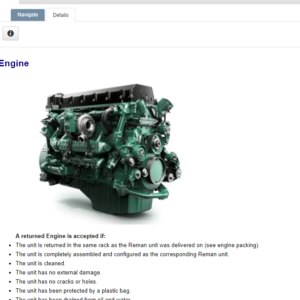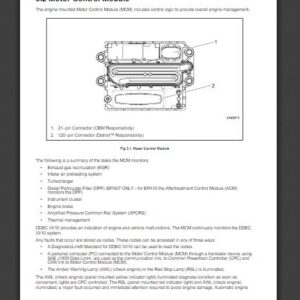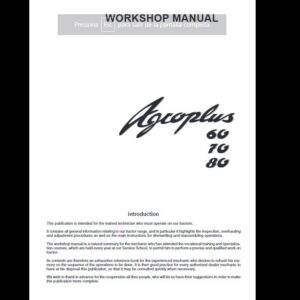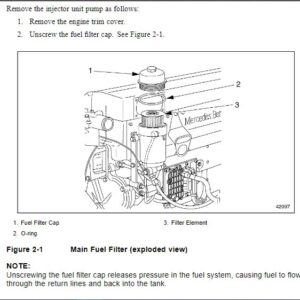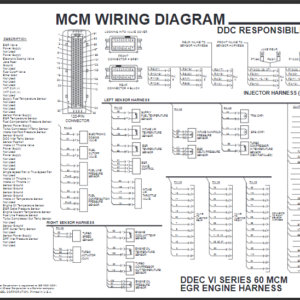Cummins X12 CM2350 X119B (2018 & Newer) Fault Code: 2321 PID: PID 190 SPN: 190 FMI: 2 Engine Crankshaft Speed/Position- Data Erratic, Intermittent, or Incorrect
Circuit Description
The crankshaft position and camshaft position sensors are Hall effect type sensors. The engine control module (ECM) provides a 5 volt supply to the position sensor and a return circuit. As the teeth on the crankshaft speed ring or the dimples in the back of the camshaft gear move past the position sensor, a signal is generated on the position sensor signal circuit. The ECM interprets this signal and converts it to an engine speed. A missing tooth on the crankshaft gear is used by the ECM to determine the position of the engine.
Component Location
The crankshaft position and camshaft position sensor location varies, depending on engine model.
Conditions for Running the Diagnostics
This diagnostic runs continuously when the engine speed is greater than 1200 RPM.
Conditions for Setting the Fault Codes
The Engine Control Module (ECM) detected an intermittent or degraded signal from the crankshaft speed/position sensor over an extended period of engine operation.
Action Taken When the Fault Code is Active
The ECM logs the fault code immediately when the diagnostic runs and fails.
For On-Board Diagnostics (OBD) engines, the ECM illuminates the the Malfunction Indicator Lamp (MIL) immediately when the diagnostic runs and fails.
Exhaust Gas Recirculation (EGR) valve operation will be disabled.
Engine torque will be reduced if the engine is operated for an extended period of time with this fault active.
Conditions for Clearing the Fault Code
To validate the repair, perform a key cycle, start the engine and run it at high idle for 5 minutes.
The fault code status displayed by INSITE™ electronic service tool will change to INACTIVE immediately after the diagnostic runs and passes.
The ECM will turn off the amber CHECK ENGINE lamp immediately after the diagnostic runs and passes.
For On-Board Diagnostics (OBD) engines, the ECM will extinguish the Malfunction Indicator Lamp (MIL) after three consecutive trips where the diagnostic runs and passes.
The Reset All Faults command in INSITE™ electronic service tool can be used to clear active and inactive faults, as well as extinguish the MIL for OBD applications.
Shop Talk
During engine operation, the ECM monitors the primary speed sensor (crankshaft speed sensor) signal. Fault Code 689 will become active and light the yellow lamp if the signal from the primary speed sensor is not present or degraded for more than 3 continuous seconds. Meanwhile, if the primary engine speed sensor signal is not present or is degraded for a moment (less than 3 seconds), the ECM will interrupt injection events based on the primary engine speed sensor and resume injection events using the backup engine speed sensor. Engine power will be reduced while the injection events are based on the backup speed sensor. If the primary speed sensor signal returns, the ECM will automatically interrupt injection events based on the backup speed sensor and resume injection events based on the primary speed sensor. If over a period of time, the ECM detects several incidents of a loss of the primary speed sensor signal, this fault code will become active.
A vehicle operator can notice an intermittent “misfire” if the injection events are interrupted while the ECM switches from control based on the primary and secondary speed sensors. Also, a vehicle operator can notice intermittent “low power” if a “glitch” in the primary speed sensor signal causes the engine to intermittently use the backup speed sensor for injection control.
This fault code becomes active whenever the ECM detects a persistent loss of the primary engine speed sensor signal over a short period of time.
This fault becomes inactive if the ECM does not detect a loss of the primary engine speed sensor signal for at least 20 minutes.
Possible causes of this fault code include:
Intermittent loss of primary speed sensor signal; the most likely cause is an intermittent open or short circuit that can be experienced with speed sensor connector problems.
Sensor air gap that is marginally too small or too large.
Actions to take if this fault is intermittent:
Look for intermittent engine harness connections in the primary engine speed sensor circuit.
Look for loose connections at the ECM connector where the pins can not be locked into the socket.
Look for places where the engine harness has worn into a nearby component, causing an intermittent short circuit.
Look for pin wear at the speed sensor.
Inspect the target wheel for damage.
Possible Cause:
1) Sensor failure
2) ECM calibration
-
CAT Engine Reprogramming Tool for flash programming C1.8, C2.4, C3.8 & C3.3B + Guide
CAT $50.00Rated 0 out of 5 -
DAF Davie Runtime v5.6.1 Davie XDc ll [02.2019] + Expire Fix 302.00 Unlock ( Windows 7 )
DAF $70.00Rated 0 out of 5
-
DOWNLOAD NISSAN UD DIESEL PC-CONSULT DIAGNOSTIC 1.1.13 & PC-REPROMASTER 1.2.0
NISSAN UD $100.00Rated 0 out of 5 -
JPRO 2022 v1 Commercial Vehicle Diagnostics V1 Software Download & Installation Service ( 1 PC )
JPRO $94.00Rated 0 out of 5 -
JOHN DEERE SERVICE ADVISOR 5.3.225 DATABASE AG + CF ENGLISH 2023
John Deere $250.00Rated 0 out of 5 -
Detroit Diesel Diagnostic Link DDDL 8.0 PRO PROFESSIONAL Software trucks
Detroit $25.00Rated 0 out of 5
Related products
-
Allison 1000 & 2000 Gen 4 Fault Codes: P0880 TCM Supply Voltage
1000 & 2000 Gen 4 $50.00Rated 0 out of 5 -
Allison 1000 & 2000 Gen 4 Fault Codes: U0031 J1850 (Class 2) Serial Data Communication Link Low
1000 & 2000 Gen 4 $50.00Rated 0 out of 5 -
Allison 1000 & 2000 Gen 4 Fault Codes: P0871 Transmission Pressure Switch Solenoid E Circuit Stuck Open
1000 & 2000 Gen 4 $50.00Rated 0 out of 5 -
Allison 1000 & 2000 Gen 4 Fault Codes: U1000 Class 2 Loss of Serial Data Communication
1000 & 2000 Gen 4 $50.00Rated 0 out of 5 -
Allison 1000 & 2000 Gen 4 Fault Codes: U1064 J1850 (Class 2) TBC Controller State of Health Failure
1000 & 2000 Gen 4 $50.00Rated 0 out of 5 -
Allison 1000 & 2000 Gen 4 Fault Codes: P0873 Transmission Pressure Switch Solenoid E Circuit High
1000 & 2000 Gen 4 $50.00Rated 0 out of 5 -
Allison 1000 & 2000 Gen 4 Fault Codes: U2104 CAN Bus Reset Counter Overrun
1000 & 2000 Gen 4 $50.00Rated 0 out of 5 -
Allison 1000 & 2000 Gen 4 Fault Codes: U0032 J1850 (Class 2) Serial Data Communication Link High
1000 & 2000 Gen 4 $50.00Rated 0 out of 5 -
Allison 1000 & 2000 Gen 4 Fault Codes: U1096 J1850 (Class 2) IPC Controller State of Health Failure
1000 & 2000 Gen 4 $50.00Rated 0 out of 5 -
Allison 1000 & 2000 Gen 4 Fault Codes: P0123 Pedal Position Sensor Circuit High Voltage
1000 & 2000 Gen 4 $50.00Rated 0 out of 5 -
Allison 1000 & 2000 Gen 4 Fault Codes: P0875 Transmission Reverse Pressure Switch Circuit Malfunction
1000 & 2000 Gen 4 $50.00Rated 0 out of 5 -
Allison 1000 & 2000 Gen 4 Fault Codes: P1688 Unmanaged Engine Torque Delivered To TCM Signal
1000 & 2000 Gen 4 $50.00Rated 0 out of 5 -
Allison 1000 & 2000 Gen 4 Fault Codes: P0872 Transmission Pressure Switch Solenoid E Circuit Stuck Closed
1000 & 2000 Gen 4 $50.00Rated 0 out of 5 -
Allison 1000 & 2000 Gen 4 Fault Codes: U0073 CAN Bus Reset Counter Overrun
1000 & 2000 Gen 4 $50.00Rated 0 out of 5
-
SERVICE MANUAL DETROIT DIESEL EPA 07, EPA 10, GHG 14 TROUBLESHOOTING
DETROIT $38.00Rated 0 out of 5

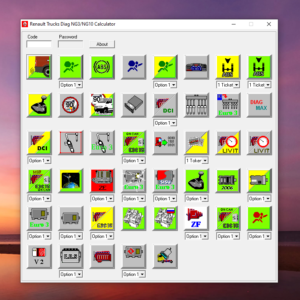
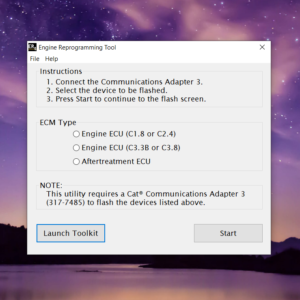
![DAF Davie Runtime v5.6.1 Davie XDc ll [02.2019] + Expire Fix 302.00 Unlock ( Windows 7 )](https://www.ecuforcetruck.com/wp-content/uploads/2021/09/Capture-2-300x300.png)

